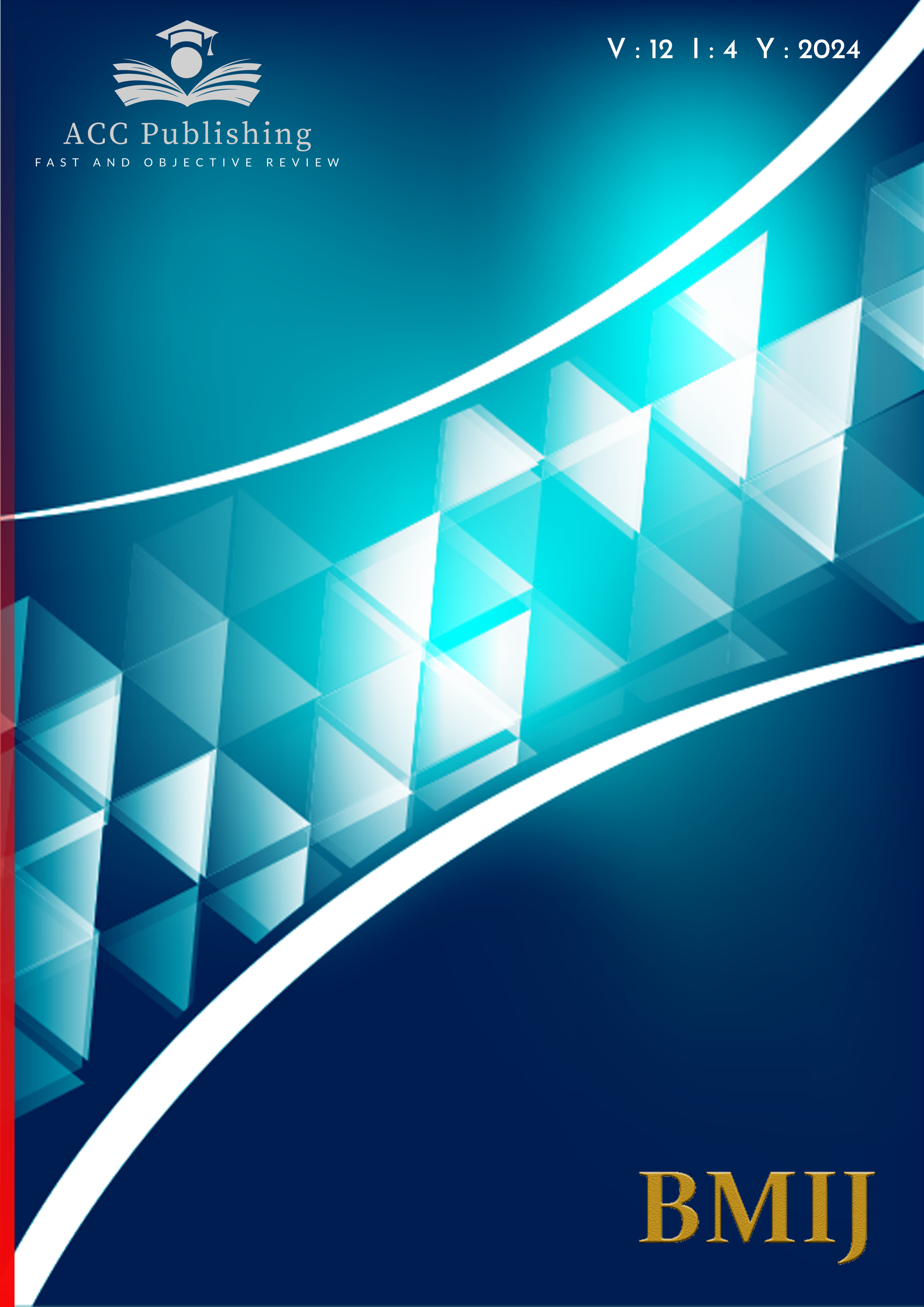
Yayınlanmış 25.12.2024
Anahtar Kelimeler
- Visual Destination Image, GoTürkiye, Destination Marketing, Content Analysis
- Görsel Destinasyon İmajı, GoTürkiye, Destinasyon Pazarlaması, İçerik Analizi
Nasıl Atıf Yapılır
Telif Hakkı (c) 2024 Hüseyin Keleş- Gözde Seval Ergün- Betül Taşpınar

Bu çalışma Creative Commons Attribution-NonCommercial-NoDerivatives 4.0 International License ile lisanslanmıştır.
Nasıl Atıf Yapılır
Öz
Bu çalışmada, Türkiye'ye seyahatle ilgili bilgilerin yer aldığı "goturkiye.com" sitesinde yer alan ve turistik talebin yoğun olduğu 10 destinasyona ait görseller analiz edilmiştir. Türkiye'de en çok ziyaret eden 10 destinasyona ait görsellerin analizinde, nitel araştırma yöntemlerinden içerik analizi tercih edilmiştir. Çalışma, araştırmaya dâhil edilen destinasyonların "goturkiye.com" sitesinde dar bir şekilde konumlandırılmadığını açıkça ortaya koymaktadır. Görüntüler bu destinasyonları güçlü coğrafi ve tarihi-kültürel alanlar olarak vurgulamaktadır. İçerik açısından, web sitesinde en çok ziyaret edilen destinasyonların görselleri, ziyaretçilerin seyahat ilgi alanlarına uygun pazar segmentlerine hitap etmektedir. Literatürde Türkiye'nin pazarlama yaklaşımını analiz eden çalışmalara ihtiyaç vardır. Araştırma sonucunda, ilgili destinasyonların görselleri Tarihi/Kültürel Miras, Doğa, Etkinlik, Dini Unsurlar, Gastronomi adı altında beş boyutta incelenmiştir. Bu bağlamda, bu çalışma Türkiye'nin çevrim içi ortamdaki destinasyon imajını görsel açıdan değerlendirerek literatüre katkı sağlamayı amaçlamaktadır. Analizi yoluyla benzersiz iç görüler sağlamayı ve önemli pazarlama sonuçlarına ulaşmayı hedeflemektedir.
Referanslar
- Abbasi, A. Z., Tsiotsou, R. H., Hussain, K., Rather, R. A., & Ting, D. H. (2023). Investigating the impact of social media images' value, consumer engagement, and involvement on eWOM of a tourism destination: A transmittal mediation approach. Journal of Retailing and Consumer Services, 71, 103231. https://doi.org/10.1016/j.jretconser.2022.103231.
- Adekuajo, I. O., Fakeyede, O. G., Udeh, C. A., & Daraojimba, C. (2023). The digital evolution in hospitality: a global review and its potential transformative impact on us tourism. International Journal of Applied Research in Social Sciences, 5(10), 440-462.
- Almeida-García, F., Domígunez-Azcue, J., Mercadé-Melé, P., & Pérez-Tapia, G. (2020). Can a destination really change its image? The roles of information sources, motivations, and visits. Tourism Management Perspectives, 34, 100662.
- Alvarez, M. D., & Campo, S. (2011). Controllable versus uncontrollable information sources: Effects on the image of Türkiye. International Journal of Tourism Research, 13(4), 310–323. https://doi.org/10.1002/jtr.838
- Assael, H. (1992). Consumer Behavior and Marketing Action. P. W. S. Kent Publishing Company, Boston, U.S.A. 4th Ed. Aem.vdu578. https://search.informit.org/doi/10.3316/aem.vdu578
- Ayeh, J. K., Au, N., & Law, R. (2013a). Predicting the intention to use consumergenerated media fortravel planning. Tourism Management, 35(2), 132–143. doi:10.1016/j.tourman.2012.06.010
- Ayeh, J. K., Au, N., & Law, R. (2013b). Do we believe in tripadvisor?" Examining credibilityperceptions and online travelers' attitude toward using user-Generated Content. Journal of Travel Research, 52(4), 437–452. doi:10.1177/0047287512475217
- Baloglu, S., & McCleary, K. W. (1999). A model of destination image formation. Annals of Tourism Research, 26(4), 868-897. https://doi.org/10.1016/S0160-7383(99)00030-4
- Baloglu, S., & Pekcan, Y. A. (2006). The website design and Internet site marketing practices of upscale and luxury hotels in Türkiye. Tourism Management, 27(1), 171–176.
- Bandyopadhyay, R. & Morais, D. (2005), Representative Dissonance- India's Self and Western Image, Annals of Tourism Research, 32(4): 1006 1021.
- Berestetska, O., Iankovets, T., Orozonova, A., Voitovych, S., Parmanasova, A., & Medvedieva, K. (2023). Using CRM systems for the development and implementation of communication strategies for digital brand management and internet marketing: EU experience. International Journal of Professional Business Review: Int. J. Prof. Bus. Rev., 8(4), 36.
- Bical, A., & Ozturk, M. C. (2021). Projected image of Türkiye in travel blogs. Journal of Tourism Leisure and Hospitality, 3(1), 5–17.
- Bulut, E. (2000). Türk turizminin Dünya’daki yeri ve dış ödemeler bilançosuna etkisi. Gazi Üniversitesi İktisadi ve İdari Bilimler Fakültesi Dergisi, 2(3), 71-86.
- Cakmak, E., & Isaac, R. K. (2012). What destination marketers can learn from their visitors' blogs: An image analysis of Bethlehem, Palestine. Journal of Destination Marketing & Management, 1(1–2), 124–133.
- Camprubı, R.; Guia, J. & Comas, J. (2014), Analysing Image Fragmentation In Promotional Brochures: A Case Study of Two Urban Destinations, Journal of Hospitality and Tourism Research, 38(2): 135-161.
- Choi, S., Lehto, X. Y., & Morrison, A. M. (2007). Destination image representation on the web: Content analysis of Macau travel related websites. Tourism Management, 28(1), 118–129.
- Chu, R. (2001). What online Hong Kong travelers look for on airline/travel websites? International Journal of Hospitality Management, 20(1), 95–100.
- Civelek, M., & Türkay, O. (2021). Türkiye’nin Turistik Tanıtımında Kullanılan Politika ve Stratejilerin İncelenmesi. Güncel Turizm Araştırmaları Dergisi, 5(1), 7-29.
- Cooper, C. (2005). Tourism: Principles and Practice. Pearson Education.
- Cruz, J. A. D., & Lacap, J. P. (2023). Film-Induced Effects and Intention to Visit: The Intervening Role of Country Image of South Korea. Advances in Hospitality and Tourism Research (AHTR). 11(1), 1-27. DOI: 10.30519/ahtr.1032405
- Çakici, A. C., Kuhzady, S., & Benli, S. (2017). An image is worth a thousand words: A pictorial analysis of protected destination image of Türkiye on Instagram. Conferencia Del FITOURISM Congress (Mersin, Türkiye). Recuperado de: https://www. Researchgate. Net/Publication/320614475_An_Image_Is_Worth_A_Thousand_Words_A_Pictorial_Analysis_of_Projected_Destination_Image_of_Türkiye_on_Instagram.
- Das, R. M., Bajaj, S., & Gupta, S. (2024). Reflecting the Unseen World: The Relationship of Photographs in Shaping Tourist Perceptions and Destination Choices. In Sustainable Tourism, Part A: Balancing Conservation and Progress in a Dynamic Industry (pp. 253-265). Emerald Publishing Limited.
- Donaire, J. A., Camprubí, R., & Galí, N. (2014). Tourist clusters from Flickr travel photography. Tourism Management Perspectives, 11, 26–33.
- Duman, T., & Kozak, M. (2010). The Turkish tourism product: Differentiation and competitiveness. Anatolia, 21(1), 89-106.
- Echtner, C. M., & Ritchie, J. B. (1991). The meaning and measurement of destination image. Journal of Tourism Studies, 2(2), 2–12.
- Ei, T., & Karamanis, K. (2017). The evolution of alternative forms of Tourism: a theoretical background. Business & Entrepreneurship Journal, 6(1), 1-4.
- Ercan, F. (2021). Instagram’da destinasyon pazarlamasında kullanılan gastronomik ürünlerin incelenmesi:“Go Türkiye” örneği. MTCON, 21, 21.
- Galí, N. & Donaire, J.A. (2005), The Social Construction of the Image of Girona: A Methodological Approach, Tourism Management, 26: 777-785.
- Garrod, B. (2008). Exploring place perception a photo-based analysis. Annals of Tourism Research, 35(2), 381–401.
- Gartner, W. C. (1994). Image Formation Process. Journal of Travel & Tourism Marketing, 2(2–3), 191–216. https://doi.org/10.1300/J073v02n02_12
- GoTürkiye: Official Travel Guide of Türkiye (2024). https://branding.goturkiye.com/tr/turkiye-kuresel-turizm-bilgi-platformu. Erişim Tarihi (07.05.2023)
- Govers, R.; Go, F.M. & Kumar, K. (2007), Promoting Tourism Destination Image, Journal of Travel Research, 46: 15-23.
- Gokovali, U. (2010). Contribution of tourism to economic growth in Turkey. Anatolia, 21(1), 139-153.
- Guven, H. (2020). Industry 4.0 and marketing 4.0: in perspective of digitalisation and E-Commerce. In Agile Business Leadership Methods for Industry 4.0 (pp. 25-46). Emerald Publishing Limited.
- Hao, X., Wu, B., Morrison, A. M., & Wang, F. (2016). Worth thousands of words? Visual content analysis and photo interpretation of an outdoor tourism spectacular performance in Yangshuo-Guilin, China. Anatolia: An International Journal of Tourism and Hospitality Research, 27(2), 201–213. https://doi.org/10.1080/13032917.2015.1082921
- Heung, V. C. (2003). Internet usage by international travellers: Reasons and barriers. International Journal of Contemporary Hospitality Management, 15(7), 370–378.
- Hsieh, H.-F., & Shannon, S. E. (2005). Three Approaches to Qualitative Content Analysis. Qualitative Health Research, 15(9), 1277–1288. https://doi.org/10.1177/1049732305276687
- Hunter, W. C. (2012). Projected Destination Image: A Visual Analysis of Seoul. Tourism Geographies, 14(3), 419–443. https://doi.org/10.1080/14616688.2011.613407
- Hunter, W. C. (2016). The social construction of tourism online destination image: A comparative semiotic analysis of the visual representation of Seoul. Tourism Management, 54, 221–229.
- Jenkins, O. H. (1999). Understanding and measuring tourist destination images. International Journal of Tourism Research, 1(1), 1–15. https://doi.org/10.1002/(SICI)1522-1970(199901/02)1:1<1::AID-JTR143>3.0.CO;2-L
- Jenkıns, O. (2003), Photography and Travel Brochures: The Circle of Representation, Tourism Geographies, 5(3): 305-328.
- Karasu, T. (1990). Turizmde Tanıtma Üzerine... Anatolia: Turizm Araştırmaları Dergisi, 1(6), 31-34.
- Khanom, M. T. (2023). Using social media marketing in the digital era: A necessity or a choice. International Journal of Research in Business and Social Science (2147-4478), 12(3), 88-98.
- Kilipiri, E., Papaioannou, E., & Kotzaivazoglou, I. (2023). Social media and influencer marketing for promoting sustainable tourism destinations: The instagram case. Sustainability, 15(8), 6374.
- Köşker, H., Albuz, N., & Ercan, F. (2019). Türkiye’de turistik talebin en fazla olduğu 10 kentin marka kimlikleri üzerine bir değerlendirme. Gaziantep University Journal of Social Sciences, 18(1), 348-365.
- Labanauskaitė, D., Fiore, M., & Stašys, R. (2020). Use of E-marketing tools as communication management in the tourism industry. Tourism Management Perspectives, 34, 100652.
- Law, R., & Leung, R. (2000). A Study of Airlines' Online Reservation Services on the Internet. Journal of Travel Research, 39(2), 202–211. https://doi.org/10.1177/004728750003900210
- Law, R., Qi, S., & Buhalis, D. (2010). Progress in tourism management: A review of website evaluation in tourism research. Tourism Management, 31(3), 297–313.
- Lee, W., & Gretzel, U. (2012). Designing persuasive destination websites: A mental imagery processing perspective. Tourism Management, 33(5), 1270–1280.
- Leung, D., Dickinger, A., & Nixon, L. (2017). Impact of Destination Promotion Videos on Perceived Destination Image and Booking Intention Change. In R. Schegg & B. Stangl (Eds.), Information and Communication Technologies in Tourism 2017 (pp. 361–375). Springer International Publishing. https://doi.org/10.1007/978-3-319-51168-9_26
- Lojo, A., Li, M., & Xu, H. (2020). Online tourism destination image: Components, information sources, and incongruence. Journal of Travel & Tourism Marketing, 37(4), 495-509.
- Ma, J. X., Buhalis, D., & Song, H. (2003). ICTs and Internet adoption in China's tourism industry. International Journal of Information Management, 23(6), 451–467.
- MacKay, K. J., & Fesenmaier, D. R. (2000). An Exploration of Cross-Cultural Destination Image Assessment. Journal of Travel Research, 38(4), 417–423. https://doi.org/10.1177/004728750003800411
- Makian, S. (2022). Online tourism communication in destination image formation. In Handbook on Tourism and Social Media (pp. 68-80). Edward Elgar Publishing. DOI: 10.4337/9781800371415.00012.
- Martín-Santana, J. D., Beerli-Palacio, A., & Nazzareno, P. A. (2017). Antecedents and consequences of destination image gap. Annals of Tourism Research, 62, 13–25.
- Mercılle, J. (2005), Media Effects on Image: The Case of Tibet, Annals of Tourism Research, 32: 1039-1055.
- Michaelidou, N., Siamagka, N. T., Moraes, C., & Micevski, M. (2013). Do marketers use visual representations of destinations that tourists value? Comparing visitors' image of a destination with marketer-controlled images online. Journal of Travel Research, 52(6), 789-804.
- Milman, A. (2011). The Symbolic Role of Postcards in Representing a Destination Image: The Case of Alanya, Türkiye. International Journal of Hospitality & Tourism Administration, 12(2), 144–173. https://doi.org/10.1080/15256480.2011.564495
- Mou, J., & Brito, P. Q. (2024). When the tourist home environment is so similar to a distant foreign destination: Evidence of constant vicarious experience effect on college students. Journal of Destination Marketing & Management, 33, 100919.
- Nixon, L., Popova, A., & Önder, I. (2017, January). How Instagram influences visual destination image: a case study of Jordan and Costa Rica. In ENTER2017 eTourism conference, Rome, Italy. https://www.academia.edu/download/82061502/RN28.pdf
- Oh, H., Kim, B.-Y., & Shin, J.-H. (2004). Hospitality and tourism marketing: Recent developments in research and future directions. International Journal of Hospitality Management, 23(5), 425–447.
- Özer, Ö. (2012). Destinasyon Tercihinde Pazarlama Karması Bileşenlerinin Rolü: Dalyan örneği. İşletme Araştırmaları Dergisi, 4(1), 163–182.
- Özturan, M., & Roney, S. A. (2004). Internet use among travel agencies in Türkiye: An exploratory study. Tourism Management, 25(2), 259–266.
- Park, C. (2002). A content analysis of travel agency websites in Korea. Asia Pacific Journal of Tourism Research, 7(1), 11–18. https://doi.org/10.1080/10941660208722105
- Pike, S. (2002). Destination image analysis: A review of 142 papers from 1973-2000. Tourism Management. 23(5): 541-549. DOI: 10.1016/S0261-5177(02)00005-5
- Pike, S., & Ryan, C. (2004). Destination Positioning Analysis through a Comparison of Cognitive, Affective, and Conative Perceptions. Journal of Travel Research, 42(4), 333–342. https://doi.org/10.1177/0047287504263029
- Prebensen, N. K. (2007). Exploring tourists' images of a distant destination. Tourism Management, 28(3), 747-756.
- Rızaoğlu, B. (2004). Turizm Pazarlaması [Tourism Marketing]. Ankara: Detay Publishing.
- Sancar, G. A. (2015). Turkey's public diplomacy: Its actors, stakeholders, and tools. In Turkey's public diplomacy (pp. 13-42). New York: Palgrave Macmillan US.
- Selby, M. (2003). Understanding urban tourism: Image, culture and experience. Bloomsbury Publishing.
- Shao, T., Wang, R., & Hao, J. X. (2019, July). Visual destination images in user-generated short videos: An exploratory study on douyin. In 2019 16th International Conference on Service Systems and Service Management (ICSSSM) (pp. 1-5). IEEE.
- Smith, P. R., & Zook, Z. (2024). Marketing communications: Integrating online and offline, customer engagement and digital technologies. Kogan Page Publishers.
- Song, S.-G., & Kim, D.-Y. (2016). A Pictorial Analysis of Destination Images on Pinterest: The Case of Tokyo, Kyoto, and Osaka, Japan. Journal of Travel & Tourism Marketing, 33(5), 687–701. https://doi.org/10.1080/10548408.2016.1167384
- Stamboulis, Y., & Skayannis, P. (2003). Innovation strategies and technology for experience-based tourism. Tourism Management, 24(1), 35–43.
- Stepchenkova, S., & Zhan, F. (2013). Visual destination images of Peru: Comparative content analysis of DMO and user-generated photography. Tourism Management, 36, 590–601.
- Strähle, J. (2017). Green Fashion Retail. In J. Strähle (Ed.), Green Fashion Retail (pp. 1–6). Springer Singapore. https://doi.org/10.1007/978-981-10-2440-5_1
- Stylidis, D. (2016). The role of place image dimensions in residents' support for tourism development. International Journal of Tourism Research, 18(2), 129-139.
- Tasci, A. D. A. (2009). Social Distance: The Missing Link in the Loop of Movies, Destination Image, and Tourist Behavior? Journal of Travel Research, 47(4), 494–507. https://doi.org/10.1177/0047287508326534
- Terzidou, M., Stylidis, D., & Terzidis, K. (2021). The role of visual media in religious tourists' destination image, choice, and on-site experience: the case of Tinos, Greece. In Visual media and tourism (pp. 101-114). Routledge.
- Tseng, Y.-P., Wu, B.-T., Morrison, A. M., Zhang, J., & Chen, Y.-C. (2015). Travel blogs on China as a destination image formation agent: A qualitative analysis using Leximancer. Tourism Management, 46, 347-358.
- Türker, G. Ö. (2020). Covid-19 salgını turizm sektörünü nasıl etkiler? Turizm akademisyenleri perspektifinden bir değerlendirme. International Journal of Social Sciences and Education Research, 6(2), 207–224.
- TÜRSAB (2022). Dünya Turizm İstatistikleri, https://www.tursab.org.tr/dunya-turizm-istatistikleri
- TÜRSAB (2022). Şehir Raporları, https://www.tursab.org.tr/sehir-raporlari/sehir-raporlari
- Ulama, Ş. (2015). Turizm tanıtım broşürlerinde destinasyon imajı analizi: Türkiye örneği. Bartın Üniversitesi İİBF Dergisi, 6(11), 231–246.
- Uner, M. M., Karatepe, O. M., Cavusgil, S. T., & Kucukergin, K. G. (2023). Does a highly standardised international advertising campaign contribute to the enhancement of destination image? Evidence from Türkiye. Journal of Hospitality and Tourism Insights, 6(3), 1169–1187.
- Upe, A. (2023). Innovation and Technological Adaptation of Business Actors in the Digital Age: A Digital Sociology Perspective. Indonesian Journal of Innovation and Applied Sciences (IJIAS), 3(3), 218-227.
- Üstün, U., & Uslu, Y. D. (2022). Türkiye’nin sağlık turizminde tercih edilme nedenleri üzerine bir çalışma: Medikal turizm endeksi. Avrupa Bilim ve Teknoloji Dergisi, (33), 344-353.
- Wang, X., Mou, N., Zhu, S., Yang, T., Zhang, X., & Zhang, Y. (2024). How to perceive tourism destination image? A visual content analysis based on inbound tourists' photos. Journal of Destination Marketing & Management, 33, 100923.
- White, C. J. (2004). Destination image: To see or not to see? International Journal of Contemporary Hospitality Management, 16(5), 309–314.
- Xiao, X., Fang, C., & Lin, H. (2020). Characterising tourism destination image using photos' visual content. ISPRS International Journal of Geo-Information, 9(12), 730.
- Xiao, X., Fang, C., Lin, H., & Chen, J. (2022). A framework for quantitative analysis and differentiated marketing of tourism destination image based on visual content of photos. Tourism Management, 93, 104585.
- Xu, H., & Ye, T. (2018). Dynamic destination image formation and change under the effect of various agents: The case of Lijiang,' The Capital of Yanyu'. Journal of Destination Marketing & Management, 7, 131–139.
- Zhou, L. (2014). Online rural destination images: Tourism and rurality. Journal of Destination Marketing & Management, 3(4), 227–240.



